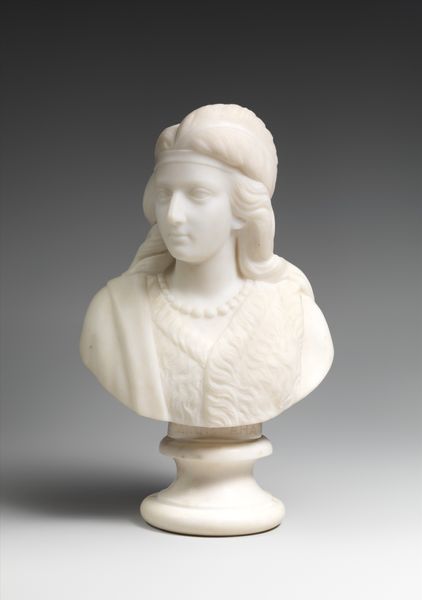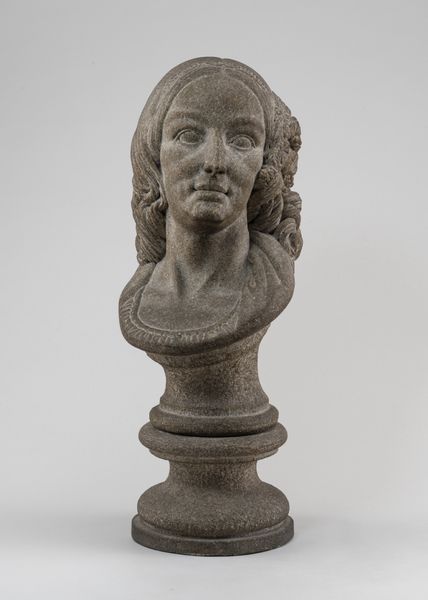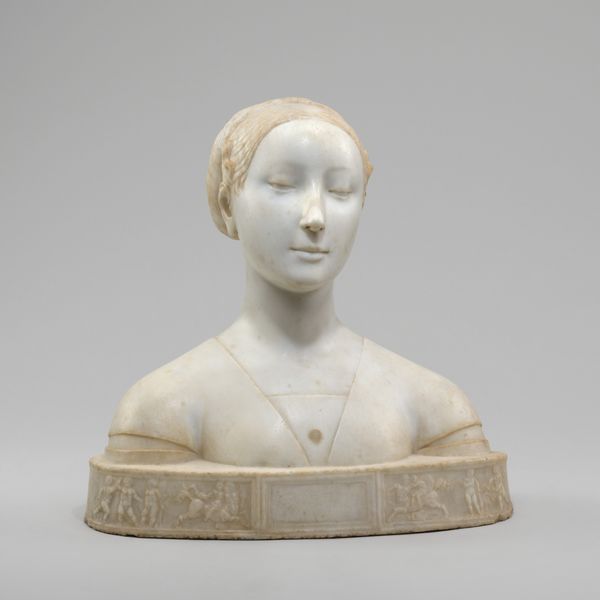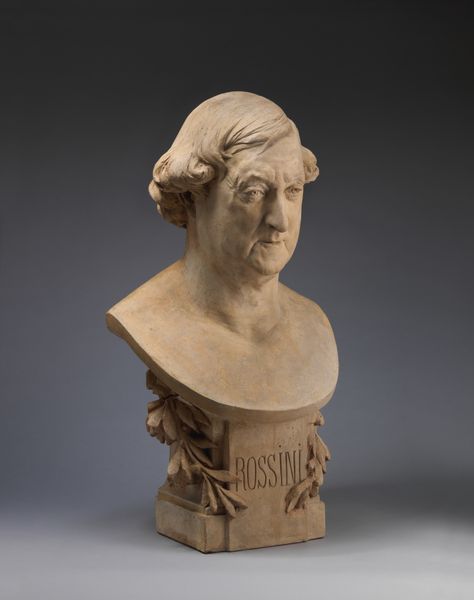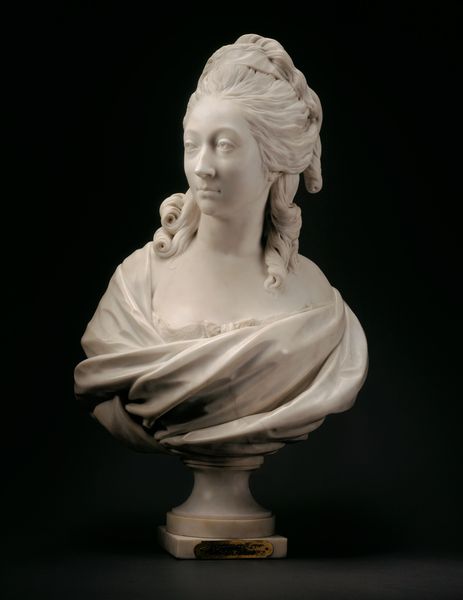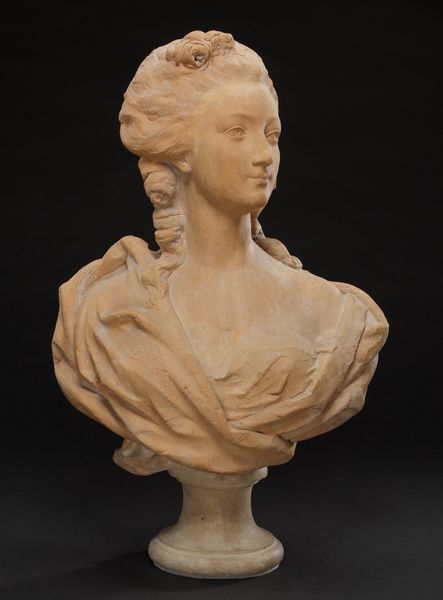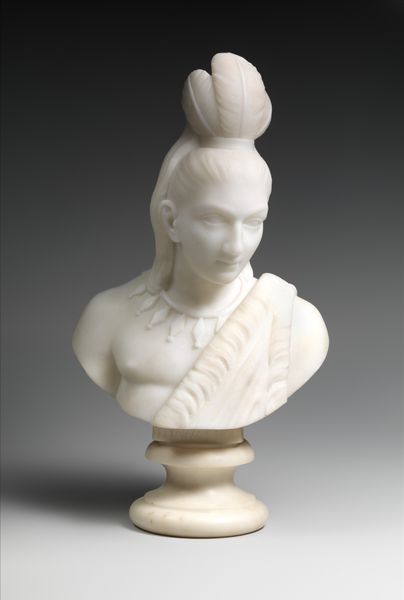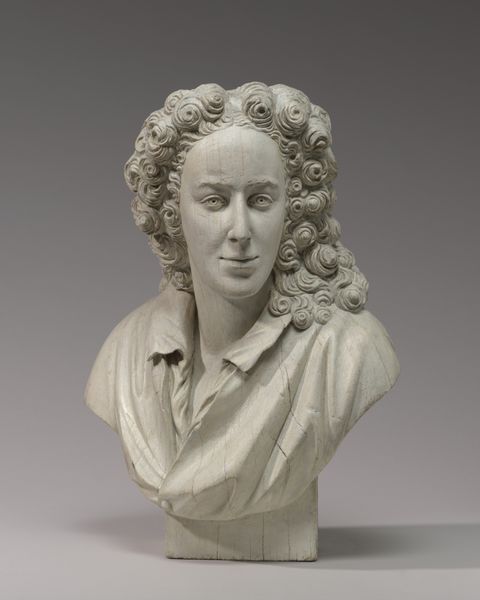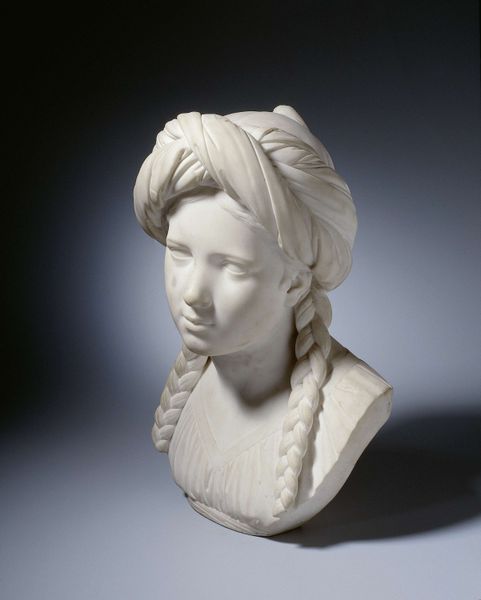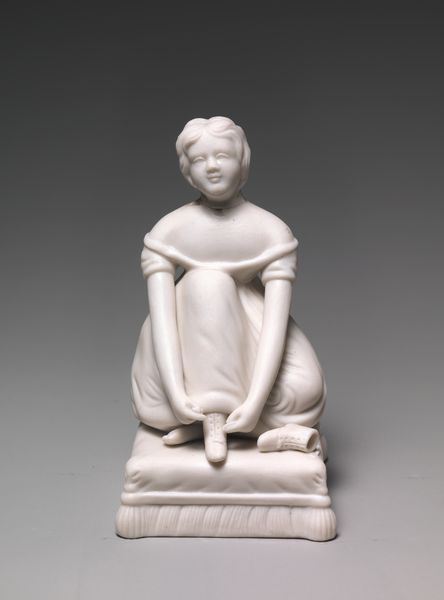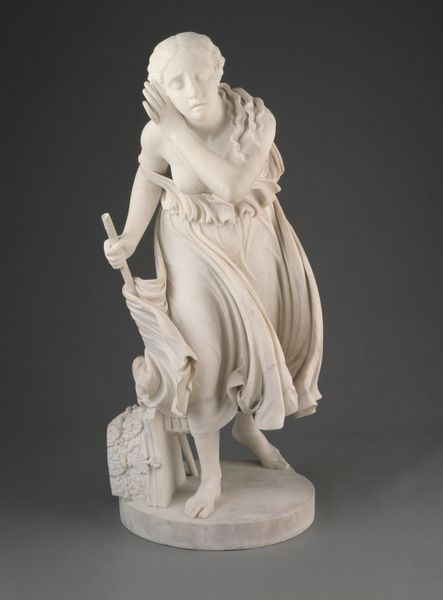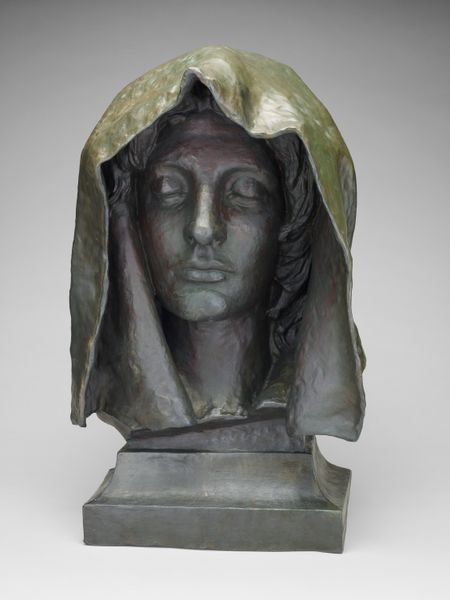
Dimensions: 18 5/8 x 9 1/4 x 6 1/2 in. (47.3 x 23.5 x 16.5 cm)
Copyright: Public Domain
Curator: This exquisite marble bust, "Eva Rohr," was sculpted by Augustus Saint-Gaudens around 1872 and currently resides at the Metropolitan Museum of Art. Editor: Immediately, what strikes me is the quiet solemnity. The way her head is bowed, eyes downcast... the smooth, pale marble amplifying this sense of gentle contemplation. The classical detailing around the bust is also pretty neat. Curator: The neoclassical style was en vogue in that era, echoing classical ideals of beauty, restraint and the dignity of the human form. But, in contrast to some historical portraits, here we do see the subject depicted with more emotional expression. We also should address Saint-Gaudens role in elevating these images from private holdings of the bourgeois elite and into more public museum spaces where a larger demographic of American society might see them. Editor: Absolutely, it’s not merely imitative of some ideal type. Saint-Gaudens masterfully used light and shadow on her features; the lines of the shoulders, the drape of her bodice—to subtly communicate a story beyond simple representation. Those textures provide visual interest across an otherwise monochromatic composition. I notice, too, how this statue almost idealizes conventional representations of women and femininity during the artist’s era. Curator: The sculpture presents a specific vision of bourgeois womanhood during the Guilded Age, where ideals of female purity and beauty were both valued and commodified. These art objects were social and aesthetic objects with the express purpose of both maintaining and extending a vision of white bourgeois culture in both elite circles and broader public audiences. This neoclassical approach allows us to better interpret her presence in American museum collections like the Met. Editor: It's interesting to unpack these visual and social dynamics within Saint-Gaudens aesthetic approach. Now, reflecting on what you pointed out about gendered commodification and class during the era, I see this portrait as more complicated artifact: yes, she embodies those values of white beauty and innocence; yet the overall impression still carries a certain ambiguity and intimacy that I hadn’t grasped on my first viewing. Curator: Indeed, thinking about "Eva Rohr" and Saint-Gaudens broader production brings together both formal and historical perspectives into dialogue. It really allows us to interpret what it meant to both create, sell, and circulate images during this historical period. Editor: It makes you appreciate the artistic choices even more. The subtlety involved truly does create a sense of narrative and place in a particularly intense way.
Comments
No comments
Be the first to comment and join the conversation on the ultimate creative platform.
